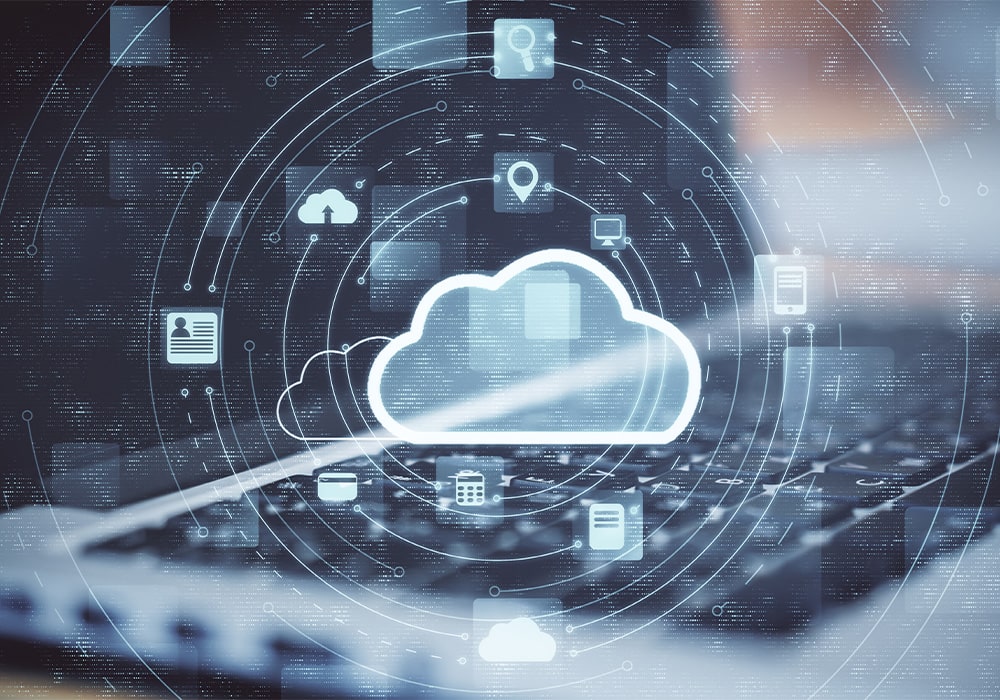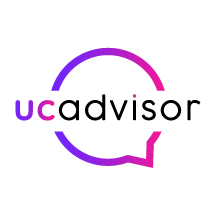
03 Oct 10 Essential Metrics to Track with CCaaS Analytics
Data is everywhere in today’s digitally-transforming world. In fact, statistics suggest we create around 2.5 quintillion bytes of data every day. For companies focused on delivering exceptional customer service, portions of this data can provide insights into opportunities for growth.
The contact centre is home to a host of useful data points about your customers, the journeys they have with your company, and the performance of your employees. A CCaaS (Contact Center as a Service) environment can be particularly rich in information.
These tools can align data points throughout the entire customer journey (from all the tools and platforms you use) into one central point of truth. Some can even integrate with other analytical tools, like CRM systems and service desks, to provide more meaningful insights.
Making the most out of the data collected by your CCaaS solutions means:
- Choosing the right tool: A good CCaaS solution should align all the platforms you use for customer contact to help you create a more cohesive stream of data.
- Leveraging analytics: Most CCaaS solutions come with analytical tools built-in, to help you track the most important information about your audience.
- Knowing which metrics to track: Understanding which metrics and KPIs you need to track to achieve your CX goals will help you to use your data more effectively.
Today, we’re going to cover some of the most essential metrics worth looking at when leveraging your CCaaS analytics solutions.
1. Customer Satisfaction
Let’s start with perhaps the most important metric of all right now: customer satisfaction. Remember, 61% of customers will switch to another company after a single bad experience, and 84% of customers say the experience your company provides is as important as your products or service.
To track customer satisfaction in your contact centre, you’ll need to monitor:
- How satisfied customers are with your service: Post interaction surveys are a good way to collect this information. You can even automate asking customers for a review of your service after a live chat exchange or a phone call.
- What customer’s aren’t satisfied with: If your customers aren’t satisfied, you’ll need to find out why. Use CSAT surveys as a way of collecting information about the things your customers would like to change about your support strategy.
Most CCaaS providers will offer tools for collecting CSAT scores from your customers, or you can find many of these tools implemented into CRM software.
2. First Contact Resolution Rate
First contact resolution rate (FCR) measures the number of customer queries you solve or answer the first time a customer contacts you. Ideally, you want this number to be as high as possible. To find your FCR rate, you’ll need to divide the number of incidents resolved in first contact in a given time period, by the total number of incidents in that time period, and multiply the number by 100.
You can gather information about how many incidents were solved during first contact by:
- Talking to customers: As an interaction ends, ask customers if their request has been resolved satisfactorily. If the answer is yes, this can be recorded.
- Measuring repeat contacts: CCaaS tools can allow you to track the number of repeat contacts from a specific person within a certain period.
If your FCR rate is low, this could be a sign you’re not routing people to the right agent first-time around. Consider using intelligent CCaaS routing tools to send customers to agents based on factors like skillset or knowledge. It’s also worth investing in tools that can help your agents deliver better service, like regular training, and bots capable of surfacing information fast.
3. Agent Productivity
Agent productivity is a bit of an “umbrella” metric to track in the CCaaS world. As more contact centre tools continue to implement solutions for workforce management and tracking, this concept is becoming easier to monitor.
Productivity metrics often include:
- Average Handling Time: AHT measures the time an agent spends on a single call or conversation. Many contact centre agents are also measured based on “speed to resolution” because contact centres want to reduce call waiting times and boost retention rates.
- Agent utilization rate: The number of hours worked by the agent divided by the agent’s work availability shows you agent utilization rate. For instance, if an agent is on calls for six hours in an eight hour shift, there utilization rate is 75%.
- Average first response time: This refers to how long it takes an agent to answer a call, reply to a message on live chat, or accept a request for video chat. Fast responses are crucial to help ensure your agents are as efficient as possible.
Many contact centre systems will track a lot of these metrics automatically. If you notice agent productivity levels are low, this might be a sign you need to take steps to support your agents. Investing in better CCaaS tools to help your agents respond to issues faster can be a good start. It’s also helpful to look for ways to regularly engage your agents.
4. Average Queue Time
Companies need to ensure they’re not leaving their customers on hold for too long, as 60% of customers say they would hang up if they had to wait on hold for longer than a minute. Most customers will want to avoid waiting forever for a response on live chat and video calls too.
You can track call queue times automatically in your contact centre technology, and divide the total hold time by the number of customers waiting on hold to get your average hold rate.
You can even use CCaaS wallboards and dashboards to display these metrics to employees to keep teams engaged. Many companies find gamification methods where agents aim to achieve the lowest queue times are a great way to keep hybrid and remote teams motivated.
If your queue times are high, there are a number of ways you can fix the problem. One option could be to outsource some of your CX needs, or take on additional members of staff to help you handle peaks in demand. Your CCaaS solution should give you insights into when your busiest times are, so you can schedule agents correctly.
Another option is to offer your customers a call-back, rather than asking them to wait in a queue. Many CCaaS solutions come with tools to allow companies to offer this service.
5. Average Resolution Time
Your average resolution time refers to how long it takes in total to resolve a customer request. The important thing to remember about this metric is that a short resolution time isn’t always a good thing. Sometimes it takes longer to solve complex problems, and customers don’t like to feel like they’re being rushed.
The quality of customer service is a big deal in today’s world, which means finding the right “average resolution time” is often a balancing act. While customers want speedy answers to their problems, they also want to make sure their issue is getting the right level of attention, so they don’t have to call back and get assistance again later.
Balance your view of average resolution times with your insights into overall customer satisfaction scores. This will help you to determine whether each customer is getting the right amount of time dedicated to their needs.
You can also get deeper insights into your average resolution times by splitting them by agent and type of request. This could show you which agents need more training, and which issues require the most attention from your staff.
6. After Interaction Work Time
This is another metric to consider with your CCaaS analytics when you’re measuring agent productivity and efficiency. Notably, not all the work your agents do in today’s contact centre will necessarily be linked to answering calls and messages. It also takes time to fill out documents, finish administrative tasks, and so on.
Speed isn’t everything here, as you’ll need to ensure your agents are finishing their tasks as accurately as possible, so mistakes aren’t made. However, it’s important to support your teams in being as efficient as possible. You can track after-work interaction time by asking agents to log the time they take to finish each interaction.
If you notice average after-interaction work times are increasing, this could be an indication that you’re asking your agents to do too much admin, the system isn’t simple enough to use, or your agents need more training. You might also find you could reduce a lot of the work involved for your agents after an interaction with automation.
There are various tools which can transcribe calls, log information, and even upload data to your CRM system straight from your CCaaS solution.
7. Number of Interactions
The main purpose behind tracking number of interactions, is it gives you an insight into how your contact centre needs to be organized to run as efficiently as possible. Keeping a close eye on the number of calls, messages, and video requests you get will tell you exactly how many agents you need to be available on any given day to address customer needs.
The same information will also give you an overview of which of your CCaaS channels are most popular. For instance, if you notice the majority of your queries come through live chat, you can focus more of your budget into serving customers through this channel.
If you notice a consistent and significant increase in interactions, this could also be a sign you need to hire more agents. Like most metrics in the contact centre, your CCaaS solution should automatically track the number of interactions you have per day.
It’s a good idea to keep a close eye on this information so you can use it to guide your scheduling decisions, and even inform important CCaaS investments.
8. Abandonment Rate
Your call abandonment rate<?a> is a contact centre performance metric which tracks the number of interactions your customers simply give up on before speaking to an agent or getting an issue resolved. It most commonly applies to calls, but can apply to web and video chat too. Basically, you’ll measure the number of interactions the customer ends before achieving a satisfactory conclusion.
If you have a conversational chat bot with high levels of abandonment, this could be a sign the bot isn’t performing as well as it should be, or it isn’t very user friendly. If your customer service agents have high abandonment rates, this could mean they need extra training to help them deliver better service, or they need help answering calls faster.
Your CCaaS solution can usually track abandonment rates on your behalf, by examining the number of people who give up on a call after waiting for a set period, or leave a chat window after sending a request. Ideally, you’ll want to weed out anyone who abandons a call within less than 10 seconds or so, as these could simply be wrong numbers.
9. Number of Escalations
The modern contact centre is designed to serve customers through an omnichannel experience across multiple channels. This makes it quite difficult to define when a conversation has been “escalated” or simply moved to another channel.
For instance, just because an interaction starts with live chat and then escalates to video doesn’t necessarily mean there’s a problem. It could just indicate that your agent needed to use a different form of communication to bring more context into the discussion.
Interaction escalation should generally be tracked in a number of ways. You can measure the number of interactions moving into another of channel, and the number of conversations sent to another agent. If the number of transitions to another agent is high, this is a sign you’re not routing calls or conversations to the right people to begin with.
It could also mean you’re not providing your agents with enough support and resources to deliver the right service first-time around.
10. Agent Engagement
Finally, while it’s important to track agent performance in today’s CCaaS landscape, it’s also worth keeping a close eye on engagement and satisfaction levels. Increasingly, many companies are discovering that a great customer experience starts with a good agent or employee experience.
There are a few ways you can track agent engagement, including looking at the average time your agent spends working when logged into your CCaaS system. You can also keep a close eye on things like agent absenteeism. More time spent off work generally means your agent isn’t very happy.
Perhaps the most important engagement metric to track will be agent turnover. If the number of employees leaving your contact center on a regular basis is constantly increasing, this is a sign you need to do something about “EX”. Consider speaking to your agents about what your company can do to boost their levels of engagement and satisfaction.
Get Tracking!
The right metrics and analytics play an important role in ensuring the success of your business. Tracking things like customer satisfaction rate, and even employee engagement, will give you an insight into the steps you need to take to make your business more effective and productive.
Remember, it all starts with choosing the right CCaaS solution to help you unlock your analytics. Contact our team today for help finding the CCaaS solution that’s right for you.



